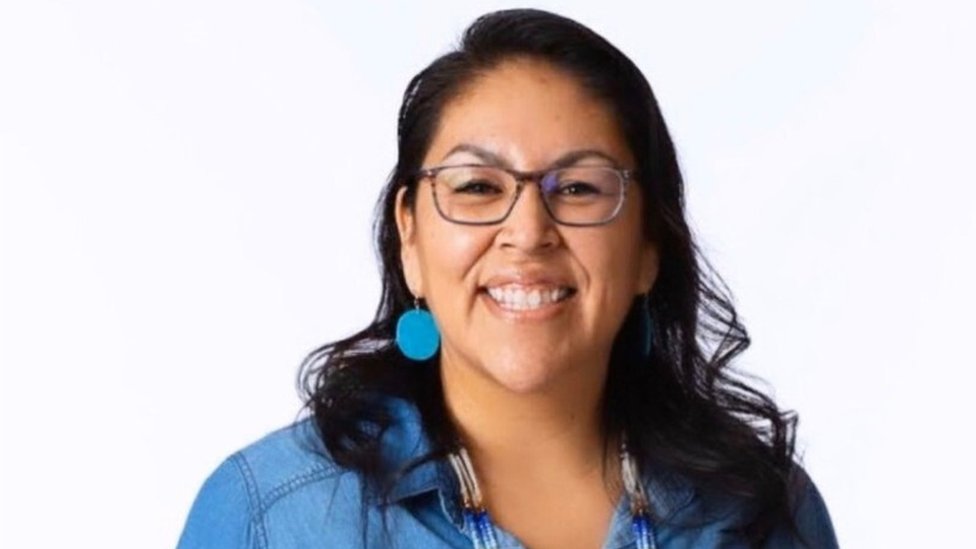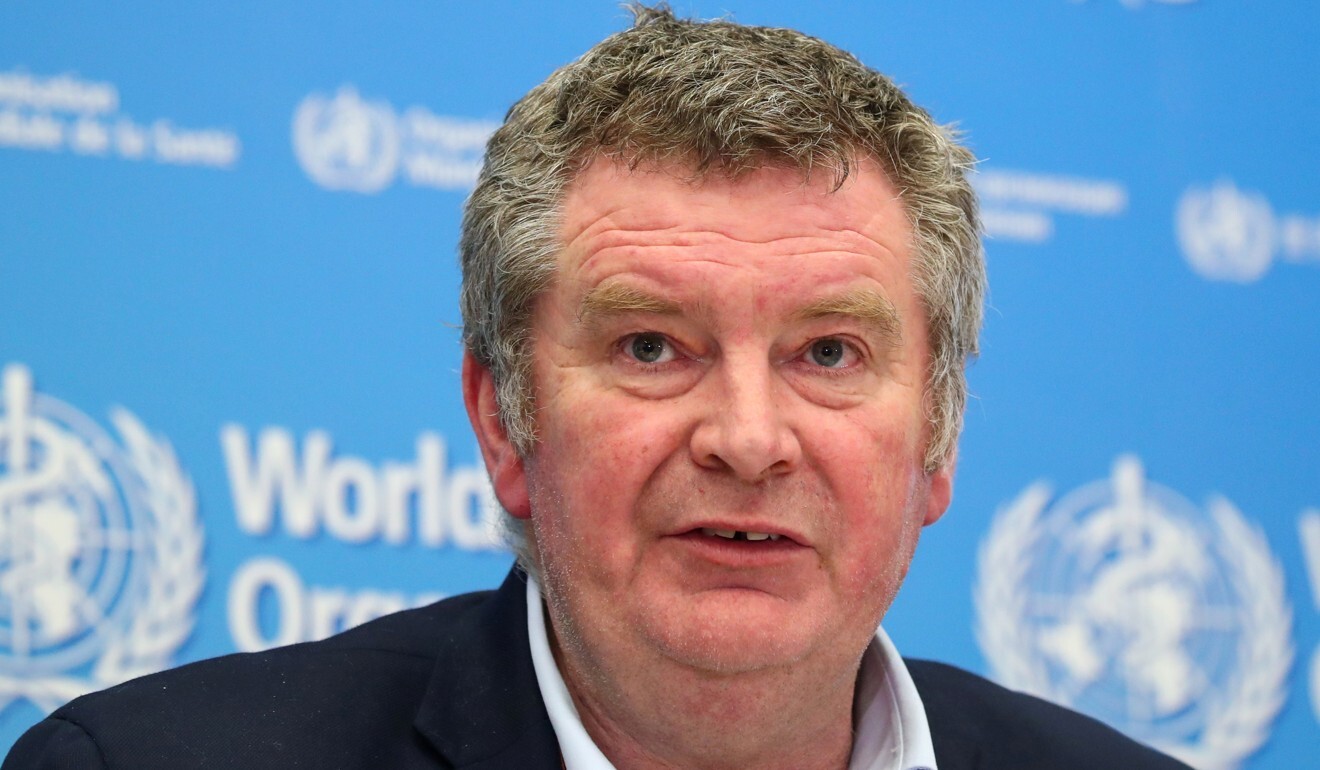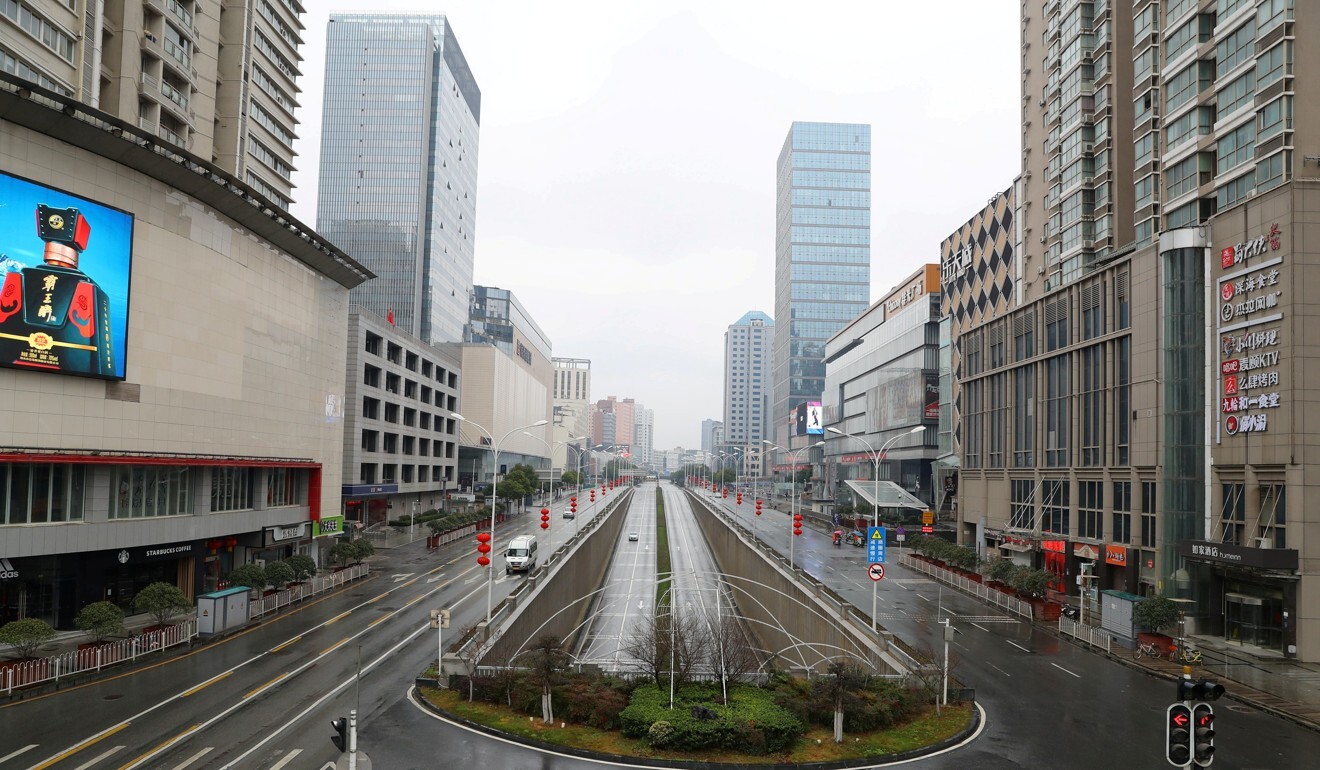FIRST INDIGENOUS WOMAN CABINET SECRETARY
'A Perfect Choice': Progressives Applaud Biden Pick of Deb Haaland
for Interior Secretary
"We can make real progress on stopping climate change and ensure sovereignty and dignity for all native people and justice for all."
FIRST ELECTED IN 2018 DEMOCRATIC SWEEP

Rep. Deb Haaland (D-N.M.) speaks at a press conference at the Longworth Office Building on September 10, 2020 in Washington, D.C. (Photo: Jemal Countess/Getty Images for Green New Deal Network)
President-elect Joe Biden's nomination of Democratic Rep. Deb Haaland to be secretary of the interior—the successful culmination of a campaign waged by a broad coalition of social and environmental justice advocates—was met with applause on Thursday.
Climate justice and Indigenous rights advocates commended the decision to put the progressive Native American congresswoman from New Mexico in charge of the department overseeing 500 million acres of federal land—calling the move promising for the responsible development of clean energy infrastructure and for the reversal of the fossil fuel industry's harmful legacy of extraction and pollution on land belonging to the U.S. public and tribal nations.
"This is a big deal," tweeted Rep. Alexandria Ocasio-Cortez (D-N.Y.).
This is a big deal.
Historic appointment. A visionary Native woman in charge of federal lands. Unequivocally progressive. Green New Deal champion. Exquisitely experienced.@RepDebHaaland sister, you are going to do such a great job. I am so proud of you and the movement.
— Alexandria Ocasio-Cortez (@AOC) December 17, 2020
Anna Peterson, executive director of The Mountain Pact, an organization that works with local elected officials across the West on federal climate and public lands policies, said in a statement that "for the last four years the Department of Interior has sold off America's public lands and natural resources to Secretary Bernhardt and [Bureau of Land Management defacto director] William Perry Pendley's friends and former clients while draining the agencies of their experienced staff."
"Our country is lucky," Peterson said, adding that Haaland would "be able to correct so many wrongdoings from the Trump administration."
Haaland—a member of the Pueblo of Laguna tribe who co-chairs the Native American Caucus and has represented New Mexico's 1st congressional district since 2019—has been a strong voice on the House Natural Resources Committee. The Democratic lawmaker is also leading congressional efforts to accomplish the goals set forth in the Thirty by Thirty Resolution to conserve at least 30% of the ocean and 30% of the land within the U.S. by 2030.
Varshini Prakash, co-founder and executive director of the Sunrise Movement, called Haaland "a perfect choice."
Haaland "is a fierce ally of our movement who has fought for renewable energy job creation in the House and was one of the first congressmembers to endorse the vision for a Green New Deal," Prakash added. "With a progressive leader at the helm, we can make real progress on stopping climate change and ensure sovereignty and dignity for all native people and justice for all."
The nomination also elicited praise from Western Values Project director Jayson O'Neill who said that "Haaland has the experience to make sure our public lands are part of the solution and knowledge to unravel the special interests' tentacles controlling the department."
"Haaland has been clear about her commitment to ending the exploitation of public lands by fossil fuel corporations."
—Mitch Jones, Food and Water Watch
Nikki Pitre, executive director of the Center for Native American Youth, called Haaland's nomination "historic, groundbreaking, and a proud moment for Indian country," adding that the congresswoman can "chart a new path forward between the United States government and Indigenous communities."
"Haaland will be the first Native American to serve as secretary of the interior, which controls federal lands and has a history of exploiting Indigenous people and displacing tribal communities," said Lori Lodes, executive director of Climate Power 2020. "As secretary of the interior, Haaland will be on the frontlines of addressing the climate crisis and protecting our land, air, and water from polluters."
Fossil Free Media director Jamie Henn called the nomination "absolutely tremendous news for Indigenous rights and our fight for climate justice"—struggles that Haaland has called inseparable because "tribal nations across the country... are battling the fossil fuel industry in their backyards."
YOU ALL! Deb Haaland is going to be Secretary of the Interior!!!!
Absolutely tremendous news for Indigenous Rights and our fight for climate justice! Let’s go!!! https://t.co/9VcB3IeKYv
— Jamie Henn (@jamieclimate) December 17, 2020
"There will be lots of work to undo Trump's toxic, anti-public lands legacy," O'Neill noted.
Food and Water Watch policy director Mitch Jones joined the chorus of praise, pointing out that "hundreds of progressive organizations and climate activist groups have rallied to support Deb Haaland as the next interior secretary because she has the record and the expertise to protect our public lands."
"Most importantly," Jones added, "Haaland has been clear about her commitment to ending the exploitation of public lands by fossil fuel corporations, which over the last four years were given a green light to pollute and profiteer off of land that should be managed in the public interest."
Deb Haaland: Historic Native American 'pick for Biden cabinet'
The congresswoman will play a crucial role in implementing Biden's environmental policies

If confirmed, Congresswoman Deb Haaland will be the first indigenous person to lead the department, which also plays a key role in Native American affairs.
She will also be the first Native American in a cabinet secretary role.
Native rights groups and progressive Democrats had pushed for the New Mexico lawmaker's nomination in recent weeks.
"It would be an honour to move the Biden-Harris climate agenda forward, help repair the government to government relationship with Tribes that the Trump Administration has ruined, and serve as the first Native American cabinet secretary in our nation's history," Ms Haaland said in a statement quoted in the New York Times.
Ms Haaland, 60, is a member of the Laguna Pueblo tribe and made history as one of the first two Native American women ever elected to Congress in 2018.
Speaker of the House of Representatives Democrat Nancy Pelosi described Ms Haaland as one of the most respected members of Congress.
Fellow progressive Democratic Congresswoman Alexandria Ocasio-Cortez praised her nomination as "historic on multiple levels".
"She brings a commitment to climate and justice to the position, and the historic weight of having a Native woman, no less a progressive one, in charge of federal lands is enormous."
As Secretary of the Interior, Ms Haaland would play a key role in implementing the administration's environmental policies. These include a promise to move the federal government away from fossil fuels. Ms Haaland's state of New Mexico is a part of the US Climate Alliance and has already set its own bold climate goals.
Ms Haaland also comes with two years of experience on the House Natural Resources Committee.
In all, she would oversee 500 million acres of federal lands, 62 national parks and work with 1.9 million Indigenous Americans from 574 federally recognised tribes. The interior secretary also manages the Bureau of Trust Funds Administration, which handles Native American finances, and Bureau of Indian Education.
Her appointment would also have real cultural significance, as the interior department has historically clashed with Native American groups. For instance, many of the nation's national parks, like Yellowstone, were cut out of Indigenous land by the US government.
More than 120 tribal leaders joined a petition from the Lakota People's Law Action Center to back Ms Haaland. In addition, celebrities and environmental activists also called for the president-elect to choose her.
A Change.org petition for Ms Haaland's selection received nearly 40,000 signatures ahead of Thursday's news.
Ms Haaland's nomination means that the Democratic majority in the lower chamber of Congress has become even slimmer - just three seats until replacements for Ms Haaland and other cabinet appointees are elected.

'I see myself when I see Deb'
We asked Native Americans about what they thought of Ms Haaland's historic nomination.
Dr Twyla Baker, 44, from North Dakota, is a citizen of the Mandan, Hidatsa, and Arikara Nation and president of the tribally chartered college of these three affiliated tribes.

How do you feel?
I see myself when I see Deb. The things that are important to me - tribal colleges, Indian Education, etc. - are important to her and I've seen her demonstrate that, speak about it and advocate for it. It's amazing. I'm still in shock.
My three affiliated tribes actually have a vested interest because we are in court with the Department of Interior right now fighting for our land rights. So her being appointed as secretary is welcome news and I'm hoping we will see a voice of reason and our land rights restored.
Why does this matter so much now?
We have lost so much ground and have stepped back with these last administrations in terms of protecting our lands and our resources.
To have a breakthrough like this is a really big deal. It's going to be amazing to have my daughters - and my son - see somebody like Deb in a position of this magnitude.
Jordan Daniel, 32, from South Dakota, is a Lakota woman and a Los Angeles-based activist who runs a nonprofit to elevate indigenous voices.

How do you feel?
It means so much to me and it has meant so much to Indian country so far just seeing the response on social media.
People that are non-native will be able to see firsthand some of the hardships that we have to deal with, but also our resiliency.
All the credit needs to go to organisers. We're showing up, putting our foot down and saying enough is enough, we deserve better.
Why does this matter so much now?
We are constantly having to speak out against the injustice our communities are constantly facing. And this is giving us a seat at the table - to make sure indigenous rights can be valued, to show what indigenous sovereignty looks like and to build a better future moving forward.
Congresswoman Haaland made sure that Native people weren't left out of the Covid relief packages. Twice. So, having this voice, impact and influence on a national scale is going to do so much good for our communities but also for our next generation.
Reporting by Sam Cabral
Biden Selects Rep. Deb Haaland for Secretary of the Interior
Center for Native American Youth Celebrates Haaland’s Historic Nomination as First Indigenous Woman, Praises Haaland’s Experience on Public Land Issues
WASHINGTON - Moments ago, reports revealed that President-elect Joe Biden will nominate Rep. Deb Haaland to serve as Secretary of the Interior. Haaland would be the first Indigenous woman to serve in that position.

For Immediate Release
Biden’s New Interior Department Nominee Poised to Clean Up Trump Administration’s Toxic Legacy
Congresswoman Haaland Set to Unravel Special Interests’ Tentacles from America’s Public Lands; Focus on Addressing Climate Change and Clean Energy Jobs
WASHINGTON - U.S. Representative Deb Haaland has been nominated by President-elect Joe Biden to be the 54th secretary of the Interior. New Mexico Congresswoman Haaland is an historic pick who is extremely qualified to lead the Interior Department with a diverse coalition of support backing her nomination. She would be the first Native American to lead the Interior Department and to serve in a presidential Cabinet if confirmed by the Senate.
While fighting to implement the Biden administration’s plan, there will be lots of work to undo Trump’s toxic, anti-public lands legacy. Accountable.US launched Damage Control to track key policies that the next administration must urgently seek to overturn after the Trump administration has enacted corrupt and harmful policies across environmental, immigration, economic, and many other issues for special interests — many with close ties to the Trump administration — that will negatively impact generations of Americans.











